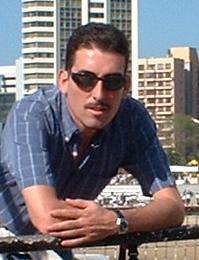The Sony shortwave classic

Much has been posted about the Sony ICF-77 including in a Yahoo web site that is dedicated solely to what is becoming a real classic. I cannot add more to what has been said except my own two bits of what I consider a true winner. Predictably, this may be one of the last of a long line of Sony shortwave receivers now that the company appears to be phasing out its world band consumer market.
During the 1970s, when a lot of us were cutting our own teeth on our first shortwave radio sets, there were very few inexpensive models to choose from sans a few multiband portables that were being sold at different department stores for their capabilities to pick up "the action bands." Some had one or two or, if you were lucky, three shortwave bands in addition to the police, air, weather and CB bands. Other fine receivers put out by Realistic, Panasonic, Sony, Zenith and General Electric were just too much for a teen-ager´s meager $10 a week allowance. I had to wait until I "grew up" and got my own job before I could pay $100 or more.
Then the 1980s rolled in and the Ambassador 2020 became a penchant model. It was a receiver that everyone craved. It was digital with PLL conversion, stable and sensitive. The 2020 was the predecessor to other models such as the DX-440 and the Sangean 803. Meanwhile, Sony was coming out with similar models -- the 2001 which became the predecessor to the now defunct classic 2010.
The ICF-77 made its way into the shortwave scene in the early 1990s and became the company´s high tech portable with a memory page for frequencies and stations that couldn´t be outmatched by any model on the market. The listed price was a hefty $500 but it could be savored by the consumer for about $350 to $400 at some specialty shortwave outlets. What makes the receiver a true classic is its ability to change modes, i.e. single sideband and USB and LSB, with a touch of a button. True, the audio performance isn´t as rich as lets say the DX-440, which sold for less than half the price of the ICF-77. But the radio performs well on the difficult-to-hear bands such as the 60 and the 120 meter bands.
Jay Allen, the ICF-77 expert over at www.radiointel.com posted an interesting review a few weeks back in which he compared his ICF-77 with the new Eton E-1, which combines shortwave and DRM and are being snatched up everywhere as if they were signed Voice of Mongolia QSL cards. He gives the Eton receiver five full moons and says (Yikes!) that it is a better radio than the ICF-77.
Now I am not an electronics lab expert nor do I have the experience that Jay has. And I still have my doubts about this Digital Radio Mondiale thing taking off. But what I do know is that radio receiver technology is changing more so now than ever before. In a few years, I am sure the Eton E-1 will pass on as a novelty of the decade. I hardly doubt it will become a classic receiver like any of the Sony radios. Here in Europe, you can all ready pick up DRM receivers at many department and electronic stores for less than half of what you would pay for an Eton in euros. But then again I think that many consumers still have no idea what DRM all means.
In the meantime, I will continue to fiddle with my ICF-77 -- even though I admit I don´t use all those fancy buttons when I turn the radio on -- and accept it as my main rig. Maybe I am too much of a conservative (not in thinking but in practice) when it comes to changing radios. But a Sony made in Japan is hard to beat.
Sony, I see if sevens have been the lucky roll of the dice.


2 Comments:
The Eton E1 does not have DRM. Nice article though about the SW77. Keep up the great work!
Saludos desde Maryland EU!
Thanks for the clarification. Yeah, the Eton E1 is satellite ready and not DRM, which is totally another system. Look forward to hearing from you again.
Post a Comment
<< Home